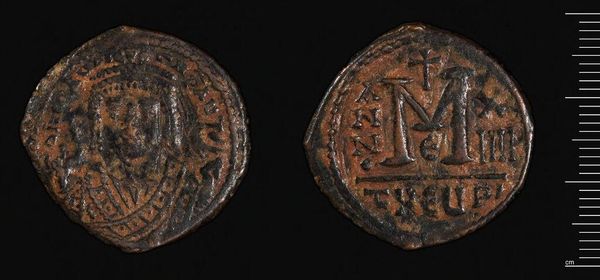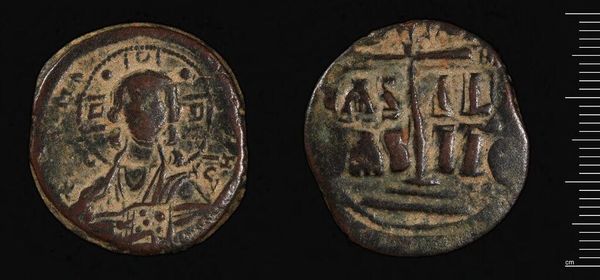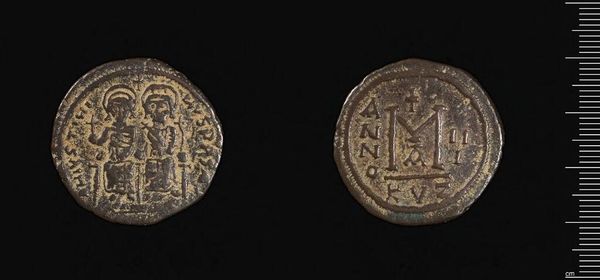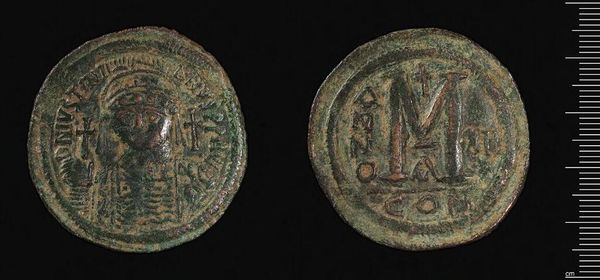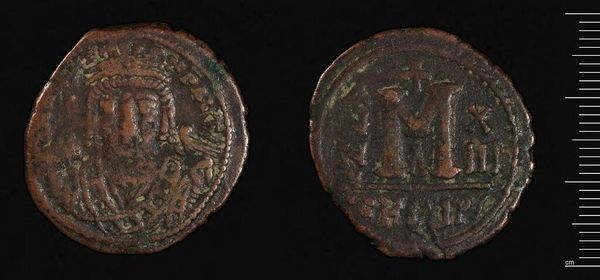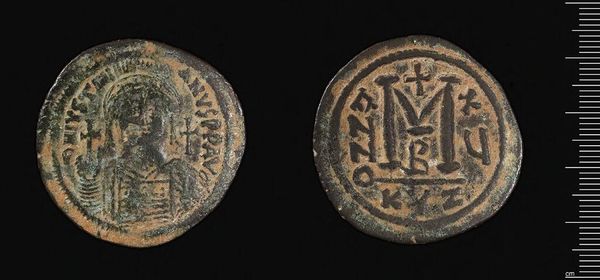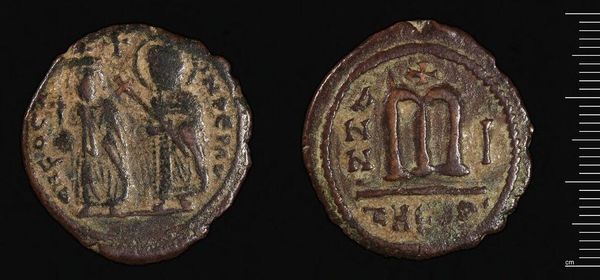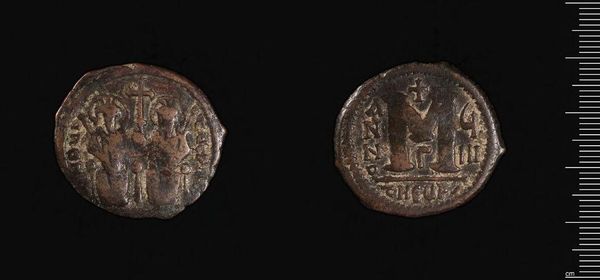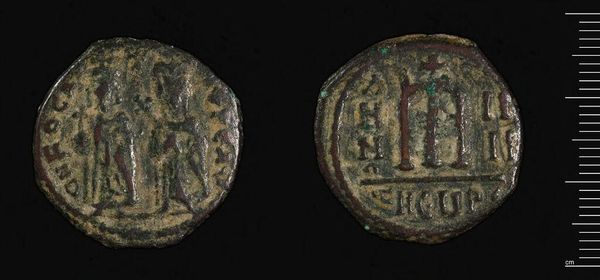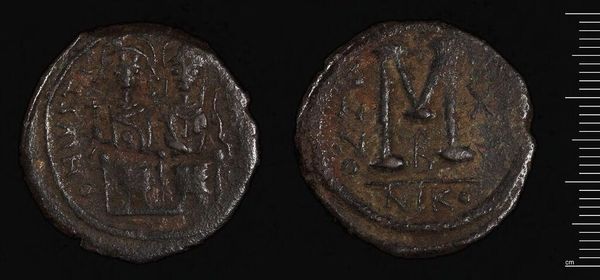
Coin of Maurice Tiberius c. 592 - 593
Dimensions: 12.12 g
Copyright: CC0 1.0
This bronze coin was made during the reign of Maurice Tiberius, a Byzantine Emperor who ruled from 582 to 602 AD. The coin is made from a bronze ingot, flattened and shaped by striking it between two dies. The incised designs on the dies are pressed into the coin’s surface, with the portrait of the emperor on one side, and inscriptions on the other. The production of these coins was labor-intensive, requiring skilled metalworkers to produce the dies, and considerable manpower to strike the coins in quantity. As such, it reminds us of the role of production in legitimizing power. The material itself, bronze, was common, but it was also a strategic asset. It was a marker of imperial authority, enabling the emperor to collect taxes, pay soldiers, and facilitate trade. By controlling the production and distribution of coins, the state maintained control over economic activity. So next time you see a coin, remember that it is not just a token of exchange, but also a product of material culture, shaped by the forces of labor, politics, and consumption.
Comments
No comments
Be the first to comment and join the conversation on the ultimate creative platform.
